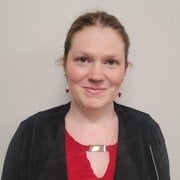We at Nor-Cal take pride in our customized SCADA solutions and customer-first mentality. We work closely with customers to design a solution that meets the needs of each project. This process begins in the proposal stage when the request first comes to our Business Development team. Understanding how we approach proposals, and the information required to put one together can help you get the best solution possible to start your project off on the right foot.
The Business Development team will most likely serve as your first point of contact when working with Nor-Cal, with an assigned Account Manager who will be your primary point of contact. Throughout the proposal process, your Account Manager and those in the Proposals team will be ready to discuss any questions related to the proposal, such as technical specifications, pricing, and equipment lead times. For convenience, all members of the team can be reached at bdgroup@norcalcontrols.net.
Once we have received a proposal request, the proposal will be set up in our system by one of our Proposal Coordinators. They will verify the due dates and request for proposal (RFP) requirements, reach out with any preliminary questions and add the proposal record to our tracking system. We understand the pressures our customers’ procurement teams are under, and we know how important it is for them to receive accurate proposals promptly. Our established process includes clearly communicating turnaround times and prioritizing the movement of proposals through our queue in cases of urgency.
From there, a Sales Engineer will review the site design, and all project documents sent with the RFP package to begin “building” the proposal. One of our main goals is for the proposal to accurately reflect the scope of the individual project. The Sales Engineer will consult with the Engineering team subject matter experts (SMEs) as necessary to ensure special project scope items are properly accounted for. Often, the Sales Engineer and SMEs will provide clarifications and redlines within the exhibits to reflect any deviations or to delineate the scope of work. A Contract Manager will review any terms & conditions included within the RFP documents and may provide further redlines to promote optimal alignment between all parties as early as possible.
Once the Sales Engineer, Engineering SMEs, and Contract Manager have reviewed the project documents and built out the initial proposal, it will be routed back to the assigned Proposal Coordinator. The Proposal Coordinator will then format the proposal and work with our procurement team on the cost and lead times as needed. The Proposal Coordinator will also put together a tentative project schedule that reflects expected timelines for key project deliverables from the point of award through equipment delivery on-site. These tentative schedules are intended to set expectations and form a basis for alignment throughout the proposal phase; as with our customized services and solutions, Nor-Cal will gladly engage with customers to discuss adjustments necessary to meet a project’s anticipated schedule.
The proposal will undergo an accounting review before being forwarded for a final Managerial review. If at any point a QA/QC reviewer identifies the need for changes, the proposal will be kicked back to the team and updated. Once all reviews have been completed, your Account Manager will be notified that it is ready to be sent out. The Account Manager will then submit the proposal via your preferred method, whether by email and/or procurement platform.
From project to project, RFP documentation will come to Nor-Cal in varying states of completeness. Sometimes, the project’s design exhibits and initial layouts are nearly or fully completed; other times, the project is still more notional, with many specifics not yet known. We prefer a certain minimum amount of information to be able to put together a proposal. Knowing the site location, site capacity, and number and make/model of the inverters or medium voltage transformers (MVTs) will help us determine the basic SCADA design and engineering effort as well as the quantity of field network enclosures (FNEs) to account for in our proposed bill of material (BOM). When no product or software preferences are provided, Nor-Cal will recommend a solution that we are confident will work based on our experience. Naturally, a proposal developed with minimal information may require changes later if the site owner indicates requirements. Nor-Cal has developed a SCADA RFP Questionnaire form to help customers efficiently convey the required information to our Business Development team.
The more information we have, the better we will be able to put together a proposal customized to your project. Being provided with an owner-approved vendor list (hardware/software preferences), a 30% or greater single-line diagram (SLD), the number of feeders, the tracker type, the current project schedule, redundancy requirements, and the battery manufacturer if a battery energy storage system (BESS) is part of the project all contribute to a more complete picture of the specific scope of work – and the list does not end here! If in doubt, it is generally better to share any information that might be relevant to the proposal than to exclude it from the RFP package.
With Nor-Cal, you can rest assured that our focus on elite customer service and developing best-in-class, tailored SCADA solutions means the proposal process is a two-way street: we are here to work with our customers to meet project needs and exceed expectations wherever possible. For example, if Nor-Cal does not receive an approved vendor list, we will often default to Moxa network switches in the SCADA and field devices; but if we later learn that Cisco is preferred, we are more than happy to revise our proposal to satisfy that preference. Or, perhaps, the owner has decided to use their firewalls at the site due to established internal protocols or standards. In this case, Nor-Cal can include a firewall for testing and commissioning, to be replaced later, and reduce the overall proposal pricing for firewall equipment and associated subscriptions.
Beyond these examples, if there is an element of the proposal or redlines that you would like to discuss, we encourage you to reach out to your Account Manager or the Business Development team, as we are often able to accommodate requests or at least provide an explanation as to why we recommend against a certain approach. Nor-Cal’s recommended solutions are derived from years of experience, but if the solution is viable, we are “product agnostic,” meaning that we are always open to looking into using a preferred vendor or product in our design.
If meteorological (MET) stations are part of the scope, we can offer standard options based on the site capacity. This standard offers a minimum of (2) MET stations for the first 20MWac and (1) station for each additional 40MWac. These stations include (1) all-in-one weather sensors, (3) back-of-module temperature sensors, (1) plane of array (POA) sensors, and (1) global horizontal irradiance (GHI) sensors (many more options are available according to preference). As site layouts are determined, design engineers will select the best locations for the MET stations and determine their quantity based on the environment they are working in. The site may also require variations in the sensor types and quantities. Nor-Cal’s MET stations can be customized to meet these design requirements.
Our adaptability does not only apply to our MET stations or SCADA designs. Nor-Cal’s reputation and specialty may be related to SCADA solutions for utility-scale solar energy plants, but we can deliver controls solutions for other project types as well, from microgrids to EMS to black start / islanding. We take pride in our growth-oriented mindset and are always looking to learn and take on new challenges. Please do not hesitate to reach out to our team and request a proposal or meeting to discuss your project with us!





